Angel Lozano
Multidimensional Polynomial Phase Estimation
Nov 11, 2024Abstract:An estimation method is presented for polynomial phase signals, i.e., those adopting the form of a complex exponential whose phase is polynomial in its indices. Transcending the scope of existing techniques, the proposed estimator can handle an arbitrary number of dimensions and an arbitrary set of polynomial degrees along each dimension; the only requirement is that the number of observations per dimension exceeds the highest degree thereon. Embodied by a highly compact sequential algorithm, this estimator exhibits a strictly linear computational complexity in the number of observations, and is efficient at high signal-to-noise ratios (SNRs). To reinforce the performance at low and medium SNRs, where any phase estimator is bound to be hampered by the inherent ambiguity caused by phase wrappings, suitable functionalities are incorporated and shown to be highly effective.
Spatially Consistent Air-to-Ground Channel Modeling via Generative Neural Networks
Feb 05, 2024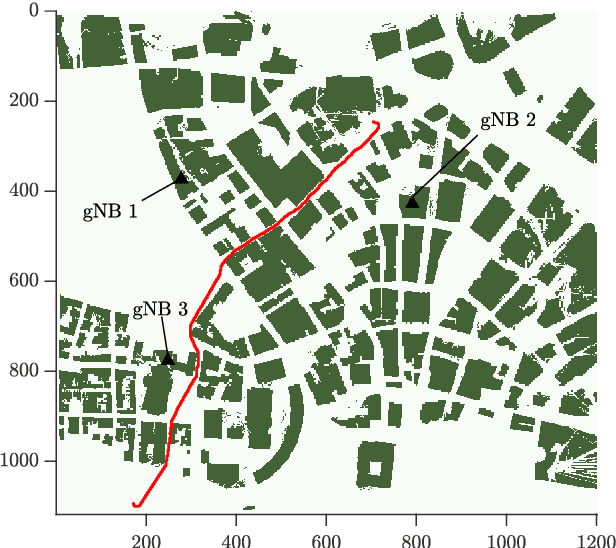
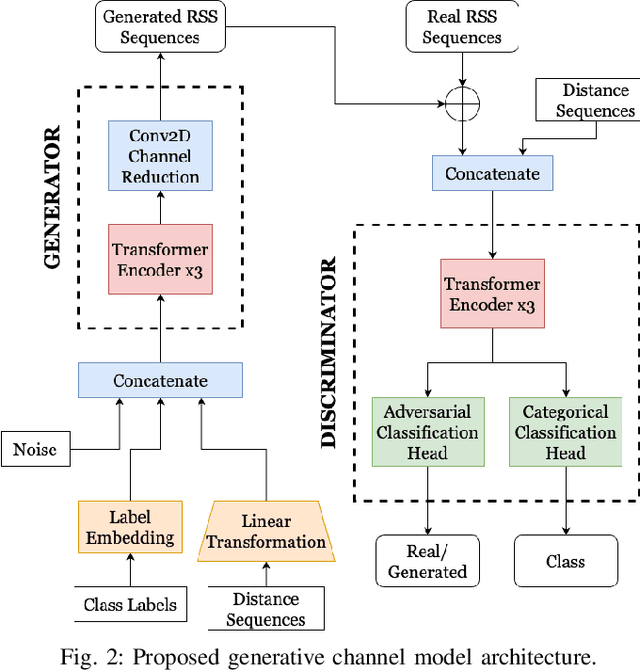
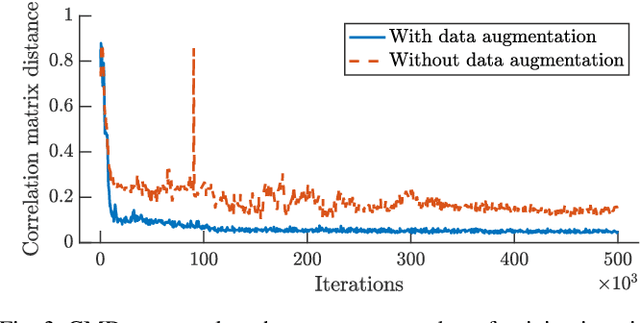

Abstract:This article proposes a generative neural network architecture for spatially consistent air-to-ground channel modeling. The approach considers the trajectories of uncrewed aerial vehicles along typical urban paths, capturing spatial dependencies within received signal strength (RSS) sequences from multiple cellular base stations (gNBs). Through the incorporation of conditioning data, the model accurately discriminates between gNBs and drives the correlation matrix distance between real and generated sequences to minimal values. This enables evaluating performance and mobility management metrics with spatially (and by extension temporally) consistent RSS values, rather than independent snapshots. For some tasks underpinned by these metrics, say handovers, consistency is essential.
Spectral vs Energy Efficiency in 6G: Impact of the Receiver Front-End
Oct 12, 2023Abstract:This article puts the spotlight on the receiver front-end (RFE), an integral part of any wireless device that information theory typically idealizes into a mere addition of noise. While this idealization was sound in the past, as operating frequencies, bandwidths, and antenna counts rise, a soaring amount of power is required for the RFE to behave accordingly. Containing this surge in power expenditure exposes a harsher behavior on the part of the RFE (more noise, nonlinearities, and coarse quantization), setting up a tradeoff between the spectral efficiency under such nonidealities and the efficiency in the use of energy by the RFE. With the urge for radically better power consumptions and energy efficiencies in 6G, this emerges as an issue on which information theory can cast light at a fundamental level. More broadly, this article advocates the interest of having information theory embrace the device power consumption in its analyses. In turn, this calls for new models and abstractions such as the ones herein put together for the RFE, and for a more holistic perspective.
Hybrid Arrays: How Many RF Chains Are Required to Prevent Beam Squint?
Oct 11, 2023Abstract:With increasing frequencies, bandwidths, and array apertures, the phenomenon of beam squint arises as a serious impairment to beamforming. Fully digital arrays with true time delay per antenna element are a potential solution, but they require downconversion at each element. This paper shows that hybrid arrays can perform essentially as well as digital arrays once the number of radio-frequency chains exceeds a certain threshold that is far below the number of elements. The result is robust, holding also for suboptimum but highly appealing beamspace architectures.
25 Years of Signal Processing Advances for Multiantenna Communications
Apr 05, 2023Abstract:Wireless communication technology has progressed dramatically over the past 25 years, in terms of societal adoption as well as technical sophistication. In 1998, mobile phones were still in the process of becoming compact and affordable devices that could be widely utilized in both developed and developing countries. There were "only" 300 million mobile subscribers in the world [1]. Cellular networks were among the first privatized telecommunication markets, and competition turned the devices into fashion accessories with attractive designs that could be individualized. The service was circumscribed to telephony and text messaging, but it was groundbreaking in that, for the first time, telecommunication was between people rather than locations. Wireless networks have changed dramatically over the past few decades, enabling this revolution in service provisioning and making it possible to accommodate the ensuing dramatic growth in traffic. There are many contributing components, including new air interfaces for faster transmission, channel coding for enhanced reliability, improved source compression to remove redundancies, and leaner protocols to reduce overheads. Signal processing is at the core of these improvements, but nowhere has it played a bigger role than in the development of multiantenna communication. This article tells the story of how major signal processing advances have transformed the early multiantenna concepts into mainstream technology over the past 25 years. The story therefore begins somewhat arbitrarily in 1998. A broad account of the state-of-the-art signal processing techniques for wireless systems by 1998 can be found in [2], and its contrast with recent textbooks such as [3]-[5] reveals the dramatic leap forward that has taken place in the interim.
What Will the Future of UAV Cellular Communications Be? A Flight from 5G to 6G
May 11, 2021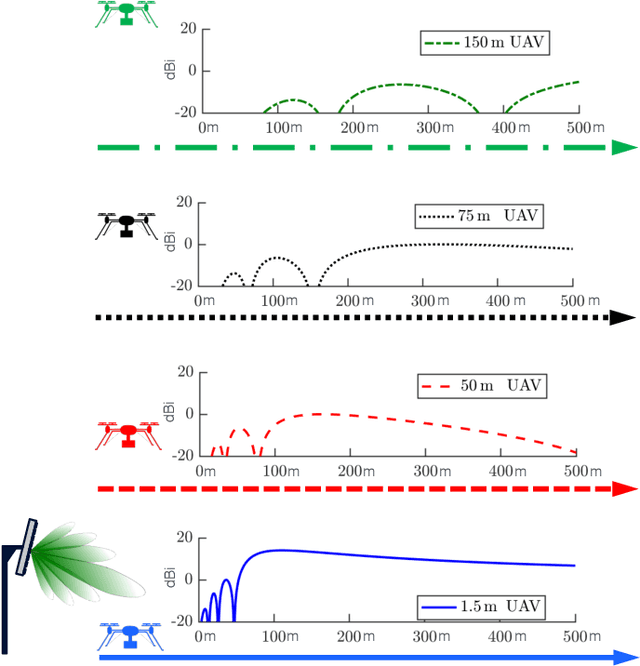
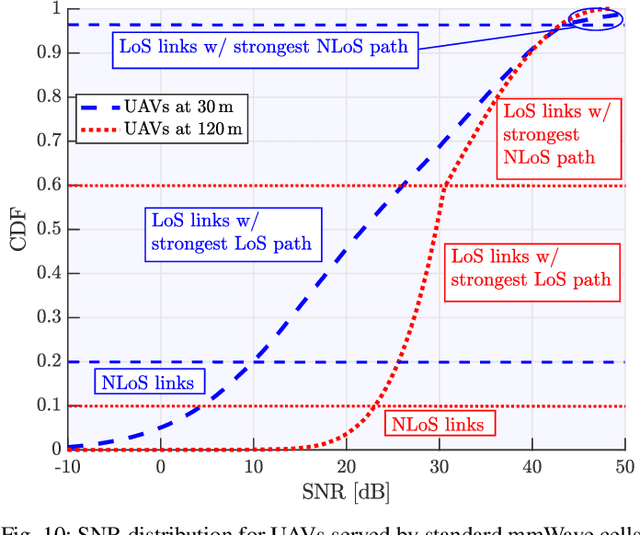
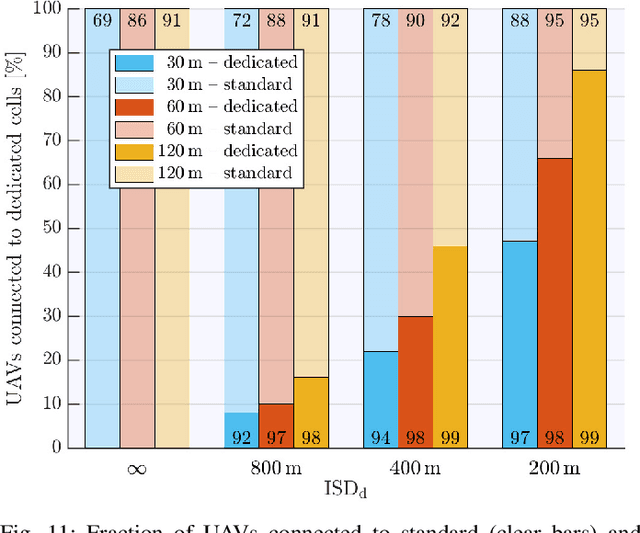
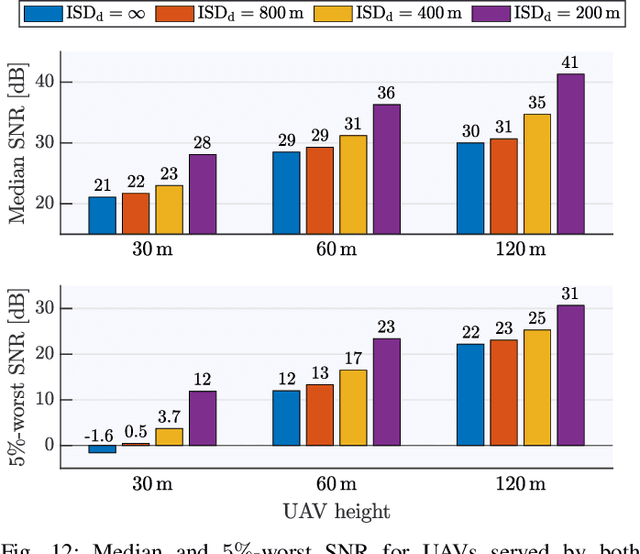
Abstract:What will the future of UAV cellular communications be? In this tutorial article, we address such a compelling yet difficult question by embarking on a journey from 5G to 6G and sharing a large number of realistic case studies supported by original results. We start by overviewing the status quo on UAV communications from an industrial standpoint, providing fresh updates from the 3GPP and detailing new 5G NR features in support of aerial devices. We then show the potential and the limitations of such features. In particular, we demonstrate how sub-6 GHz massive MIMO can successfully tackle cell selection and interference challenges, we showcase encouraging mmWave coverage evaluations in both urban and suburban/rural settings, and we examine the peculiarities of direct device-to-device communications in the sky. Moving on, we sneak a peek at next-generation UAV communications, listing some of the use cases envisioned for the 2030s. We identify the most promising 6G enablers for UAV communication, those expected to take the performance and reliability to the next level. For each of these disruptive new paradigms (non-terrestrial networks, cell-free architectures, artificial intelligence, reconfigurable intelligent surfaces, and THz communications), we gauge the prospective benefits for UAVs and discuss the main technological hurdles that stand in the way. All along, we distil our numerous findings into essential takeaways, and we identify key open problems worthy of further study.
Millimeter-Wave UAV Coveragein Urban Environments
Apr 05, 2021
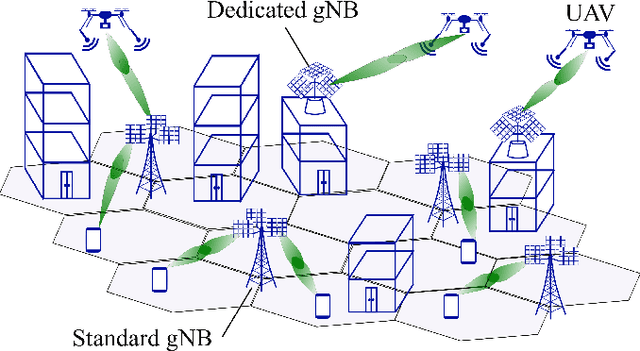
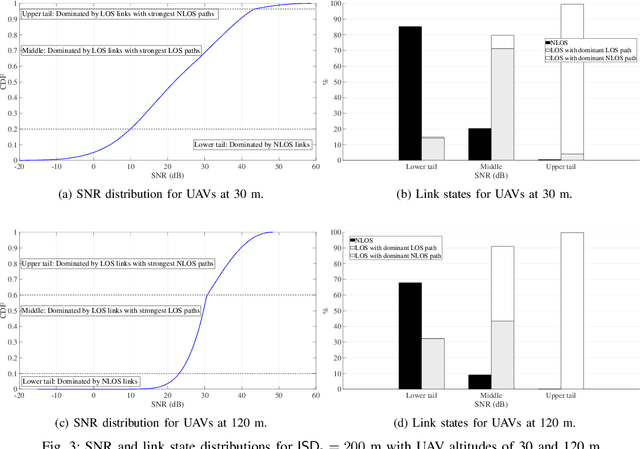

Abstract:With growing interest in mmWave connectivity for UAVs, a basic question is whether networks intended for terrestrial users can provide sufficient aerial coverage as well. To assess this possibility, the paper proposes a novel evaluation methodology using generative models trained on detailed ray tracing data. These models capture complex propagation characteristics and can be readily combined with antenna and beamforming assumptions. Extensive simulation using these models indicate that standard (street-level and downtilted) base stations at typical microcellular densities can indeed provide satisfactory UAV coverage. Interestingly, the coverage is possible via a conjunction of antenna sidelobes and strong reflections. With sparser deployments, the coverage is only guaranteed at progressively higher altitudes. Additional dedicated (rooftop-mounted and uptilted) base stations strengthen the coverage provided that their density is comparable to that of the standard deployment, and would be instrumental for sparse deployments of the latter.
Lightweight UAV-based Measurement System for Air-to-Ground Channels at 28 GHz
Mar 31, 2021

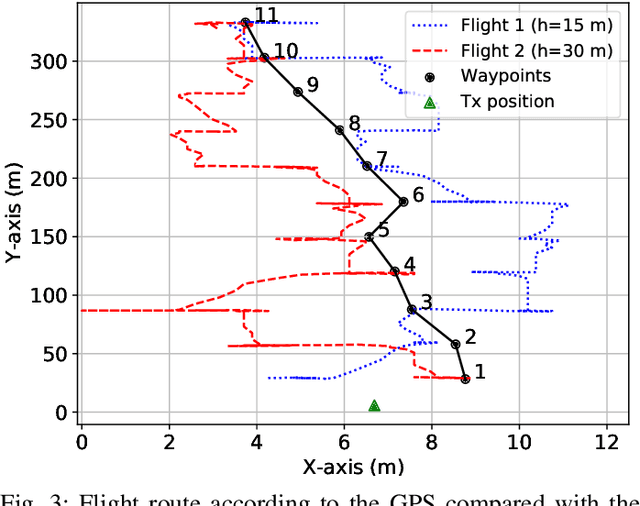
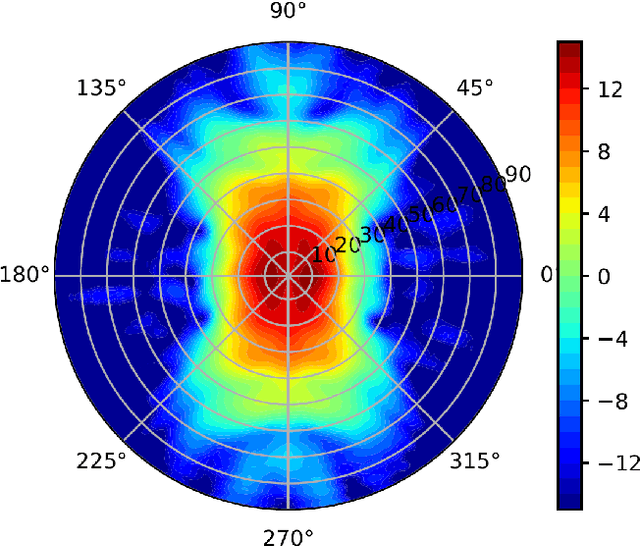
Abstract:Wireless communication at millimeter wave frequencies has attracted considerable attention for the delivery of high-bit-rate connectivity to unmanned aerial vehicles (UAVs). However, conducting the channel measurements necessary to assess communication at these frequencies has been challenging due to the severe payload and power restrictions in commercial UAVs. This work presents a novel lightweight (approximately 1.3 kg) channel measurement system at 28 GHz installed on a commercially available UAV. A ground transmitter equipped with a horn antenna conveys sounding signals to a UAV equipped with a lightweight spectrum analyzer. We demonstrate that the measurements can be highly influenced by the antenna pattern as shaped by the UAV's frame. A calibration procedure is presented to correct for the resulting angular variations in antenna gain. The measurement setup is then validated on real flights from an airstrip at distances in excess of 300 m.
 Add to Chrome
Add to Chrome Add to Firefox
Add to Firefox Add to Edge
Add to Edge